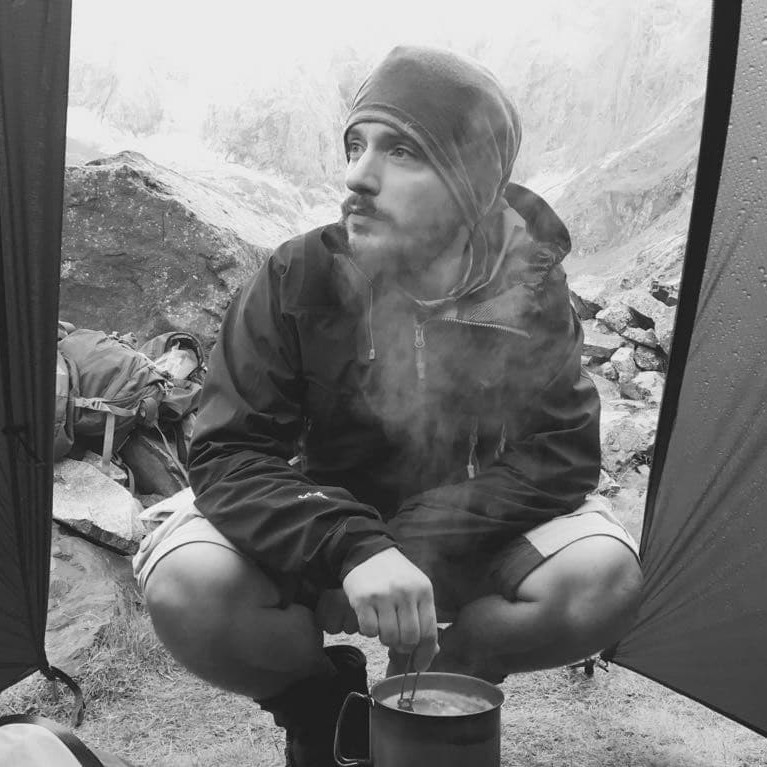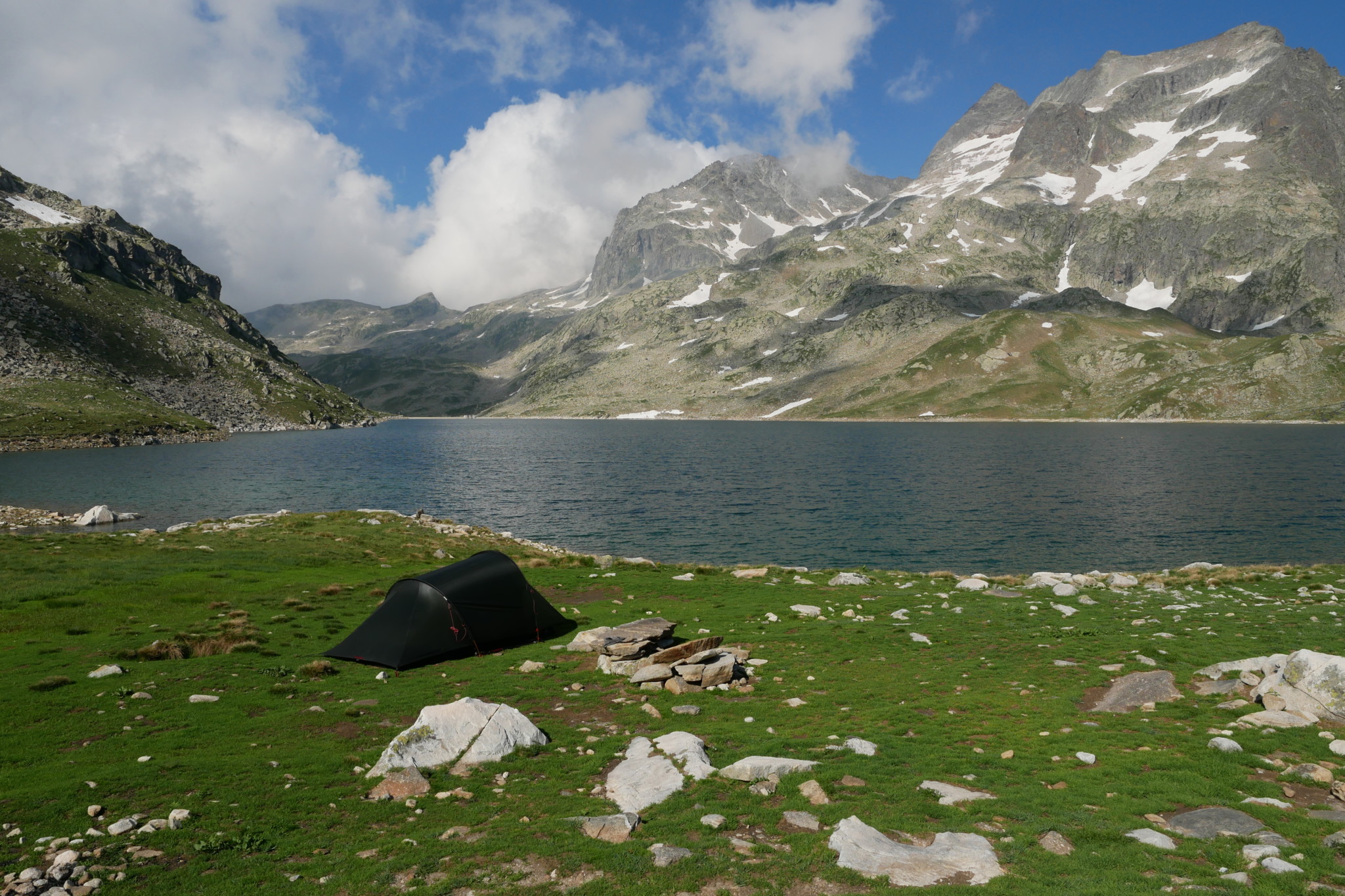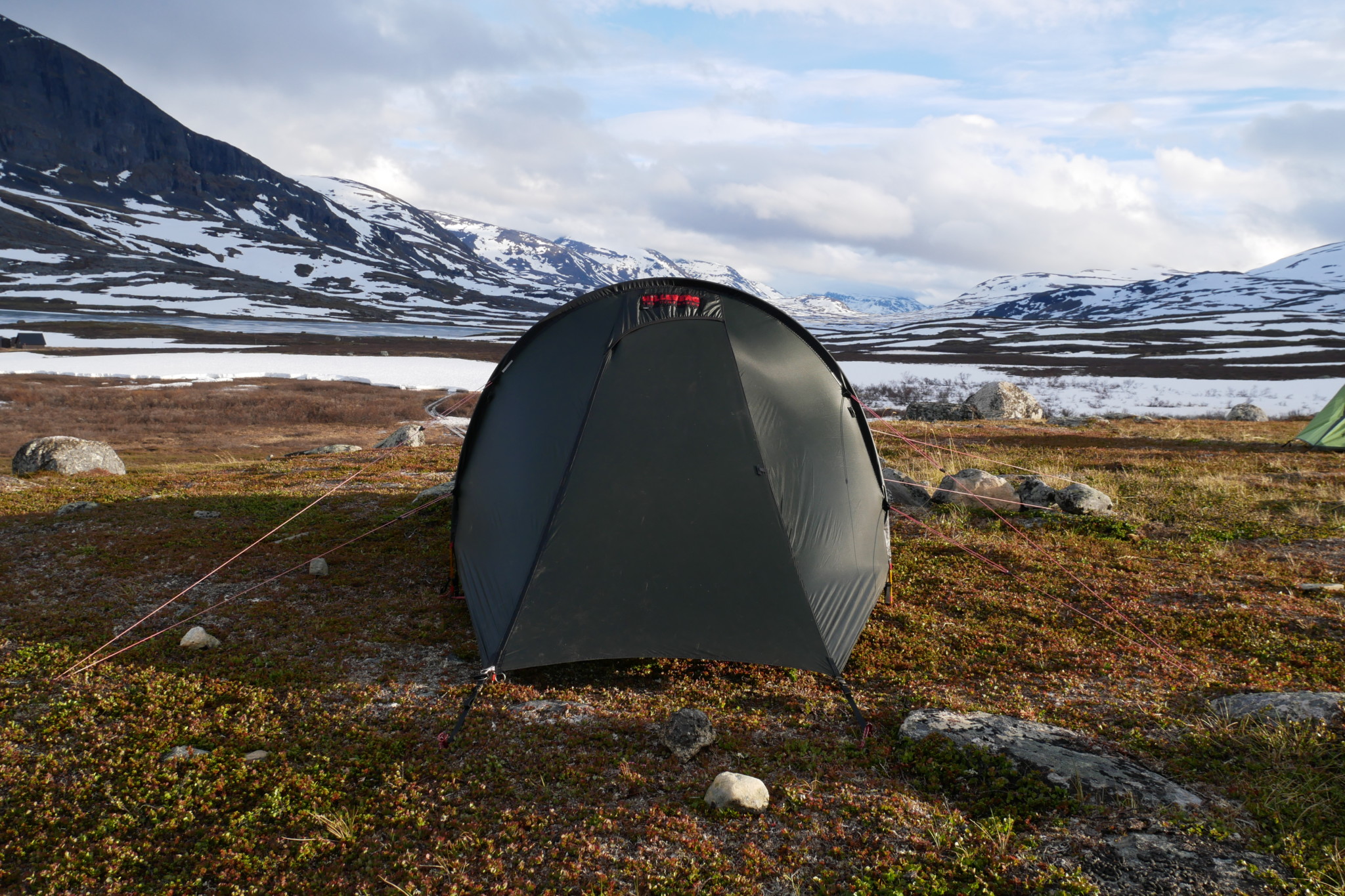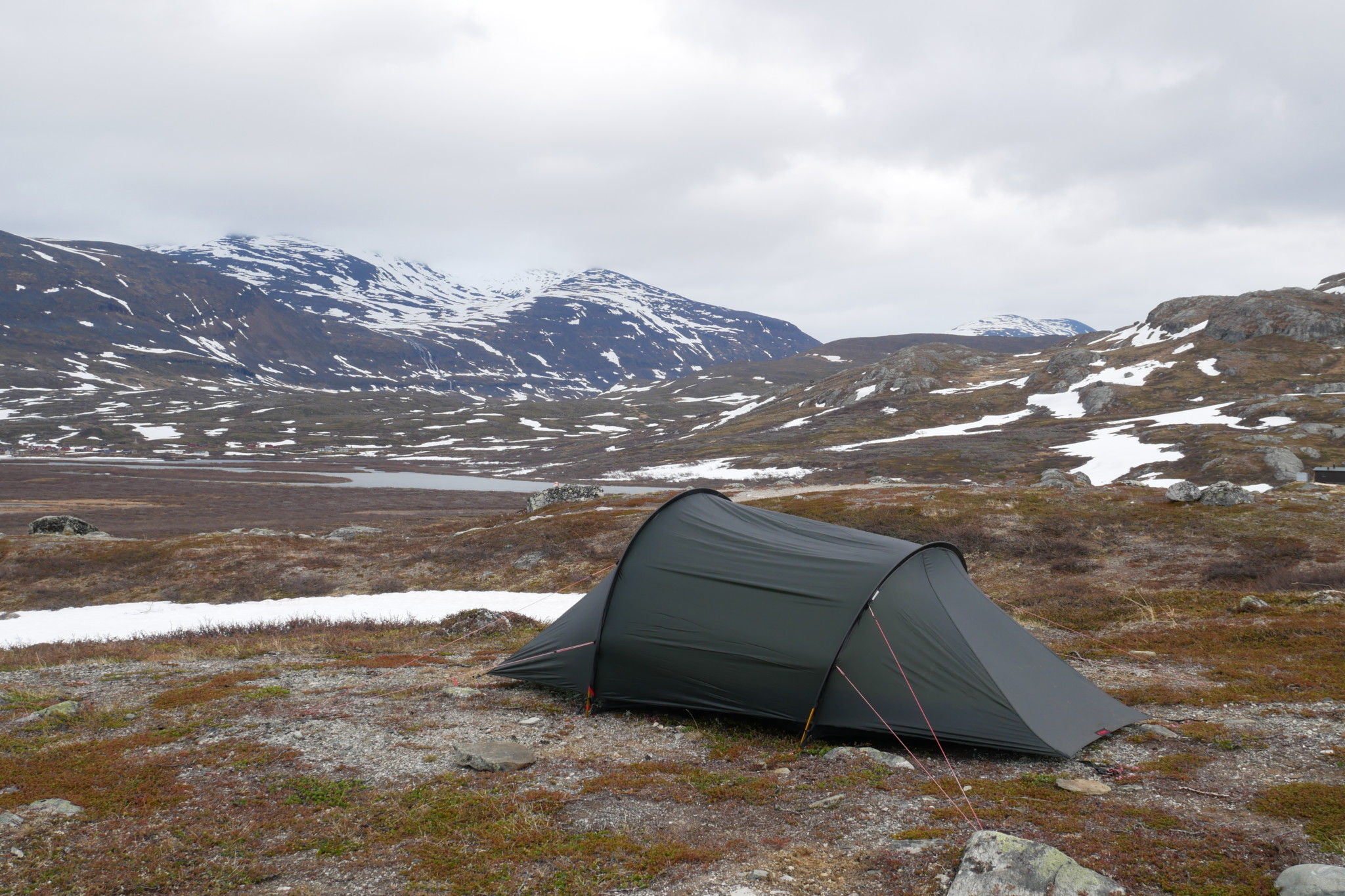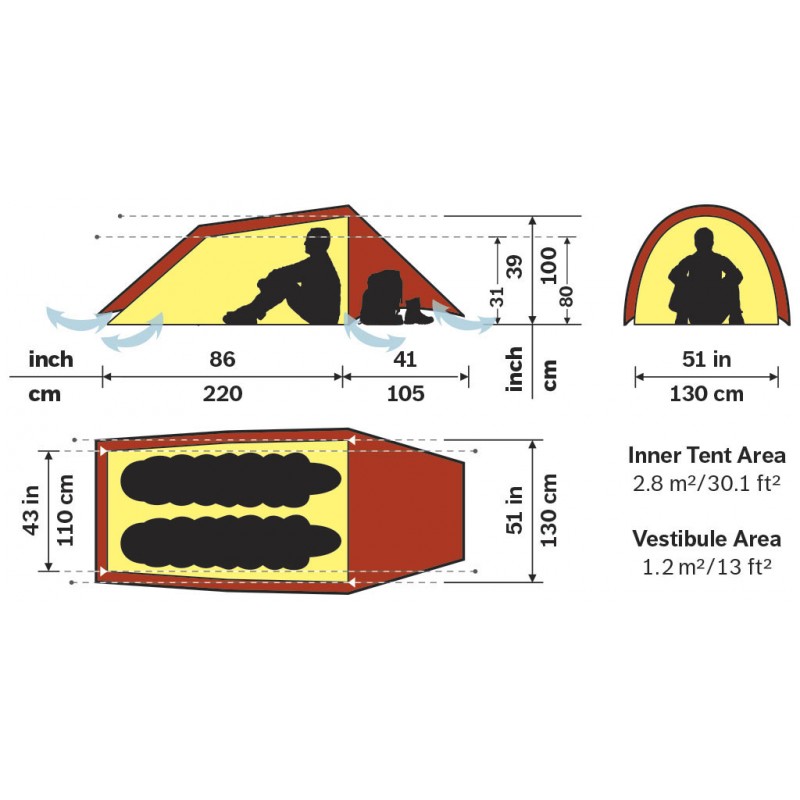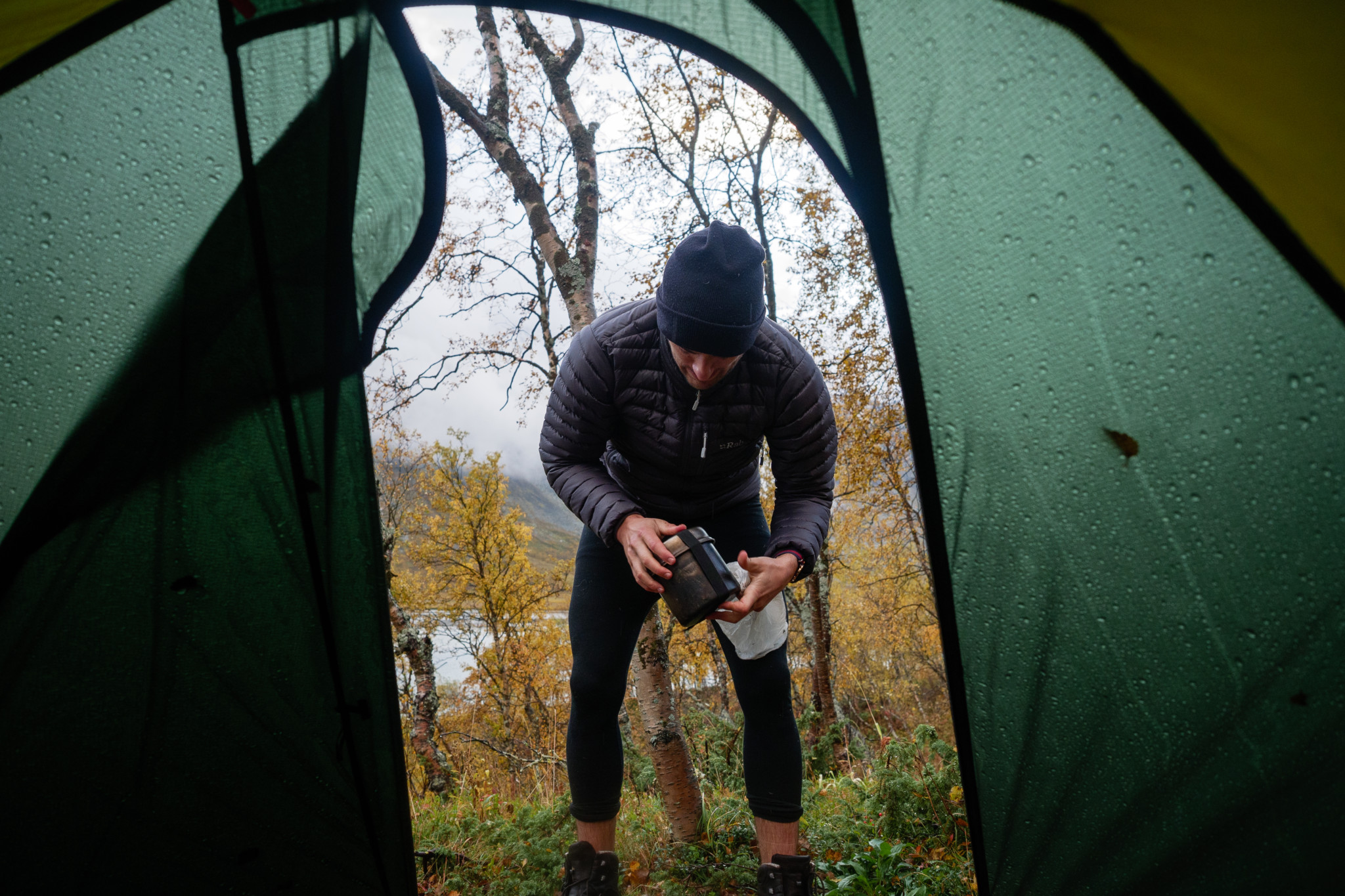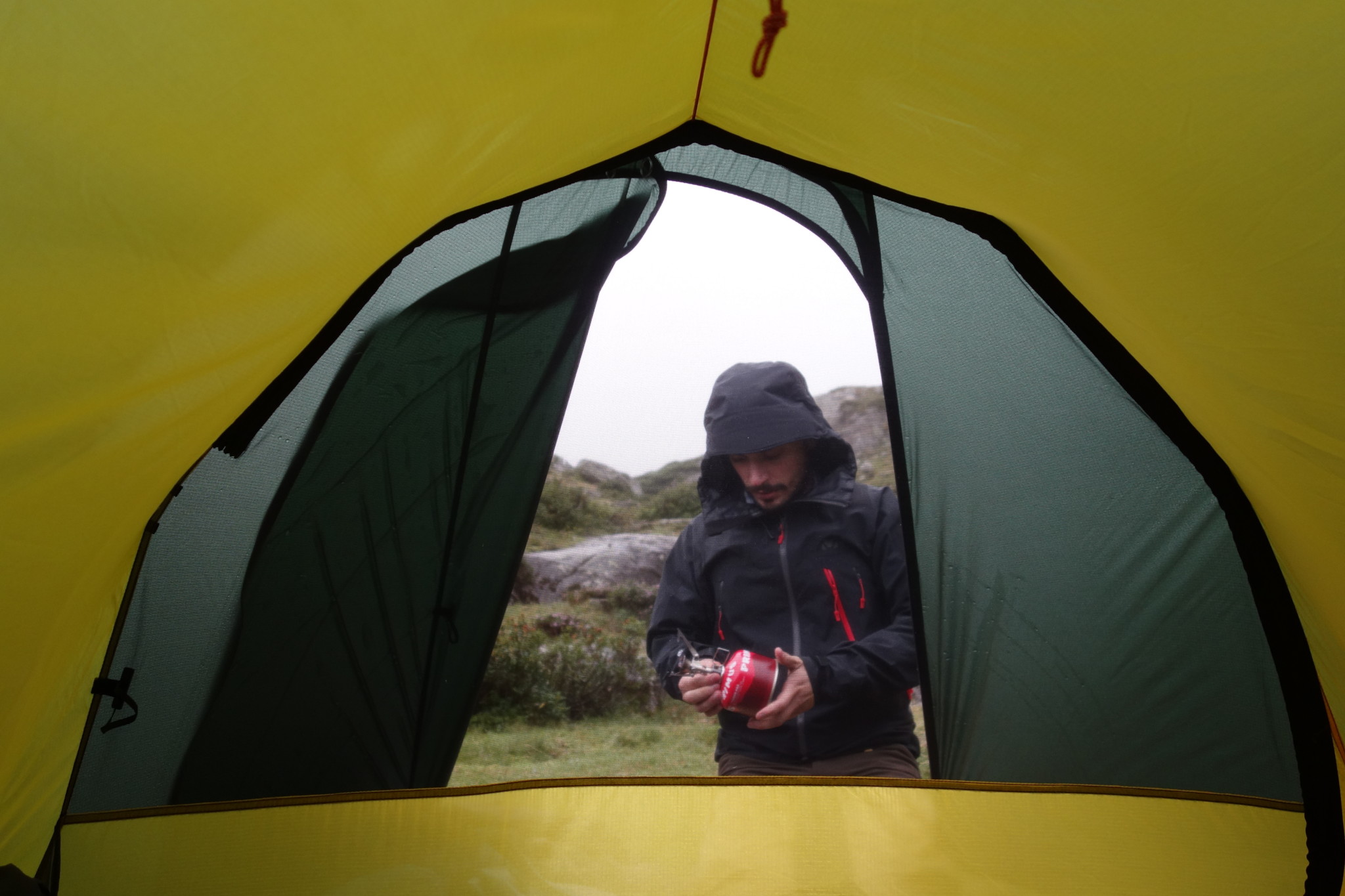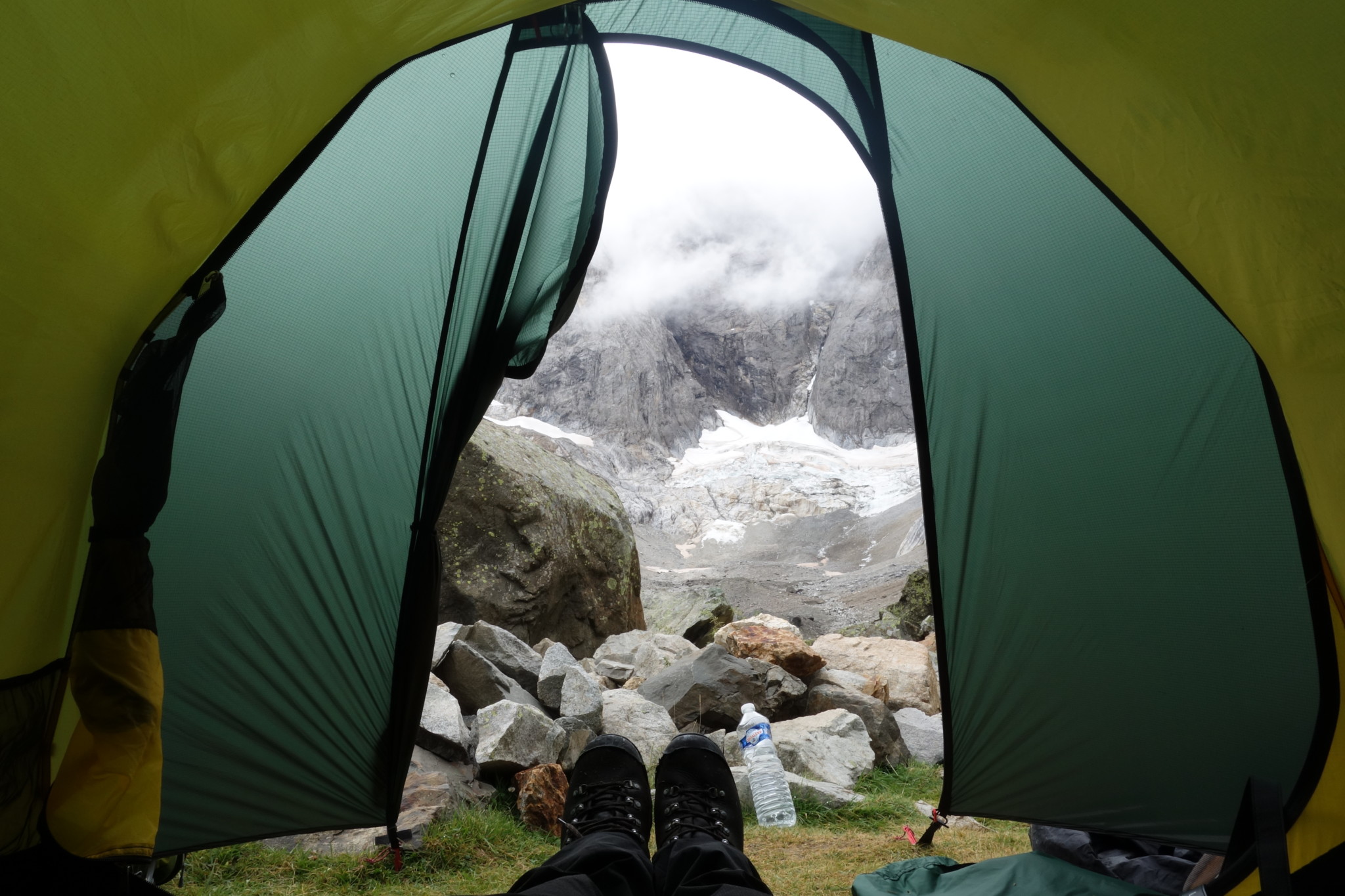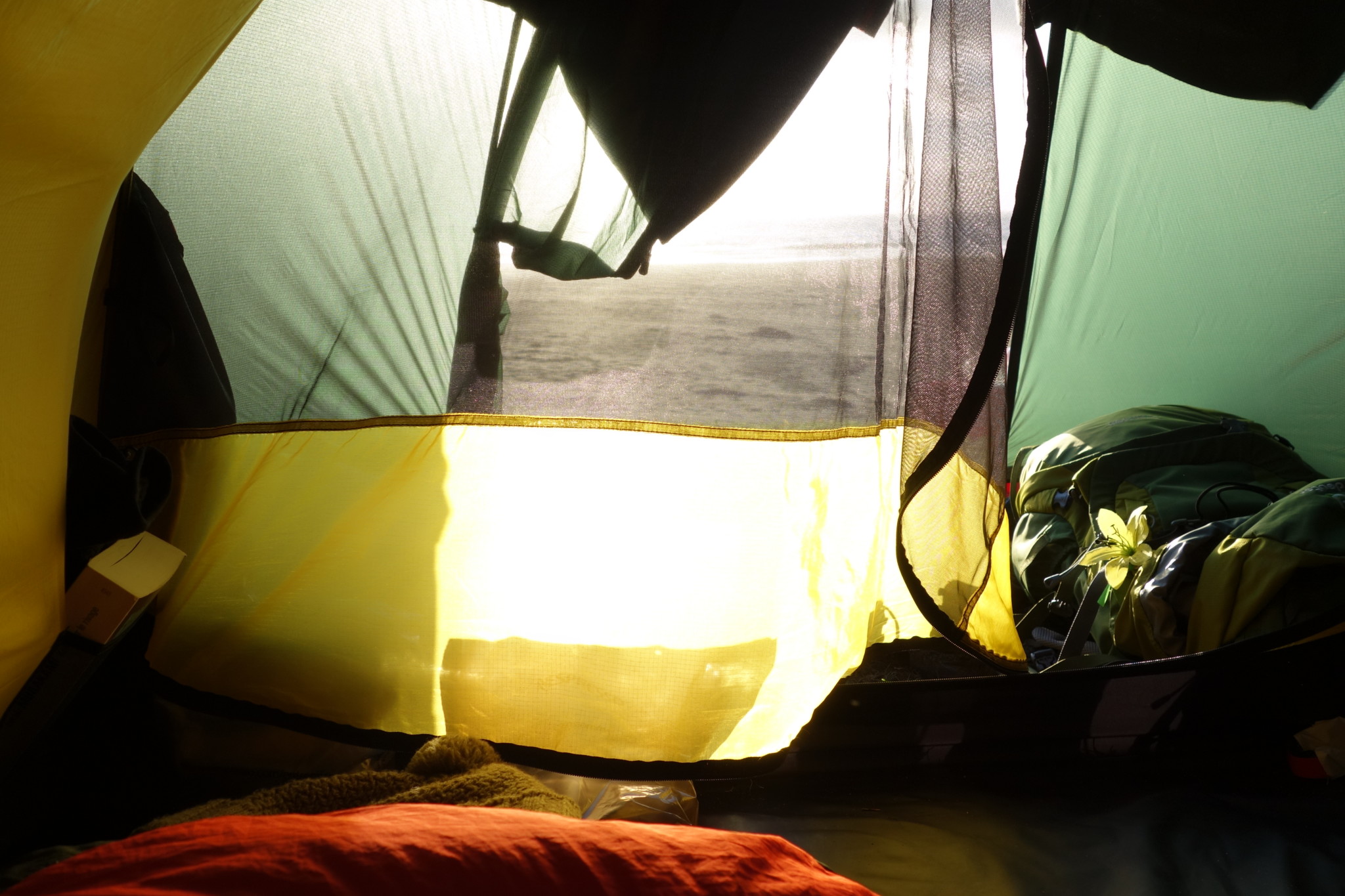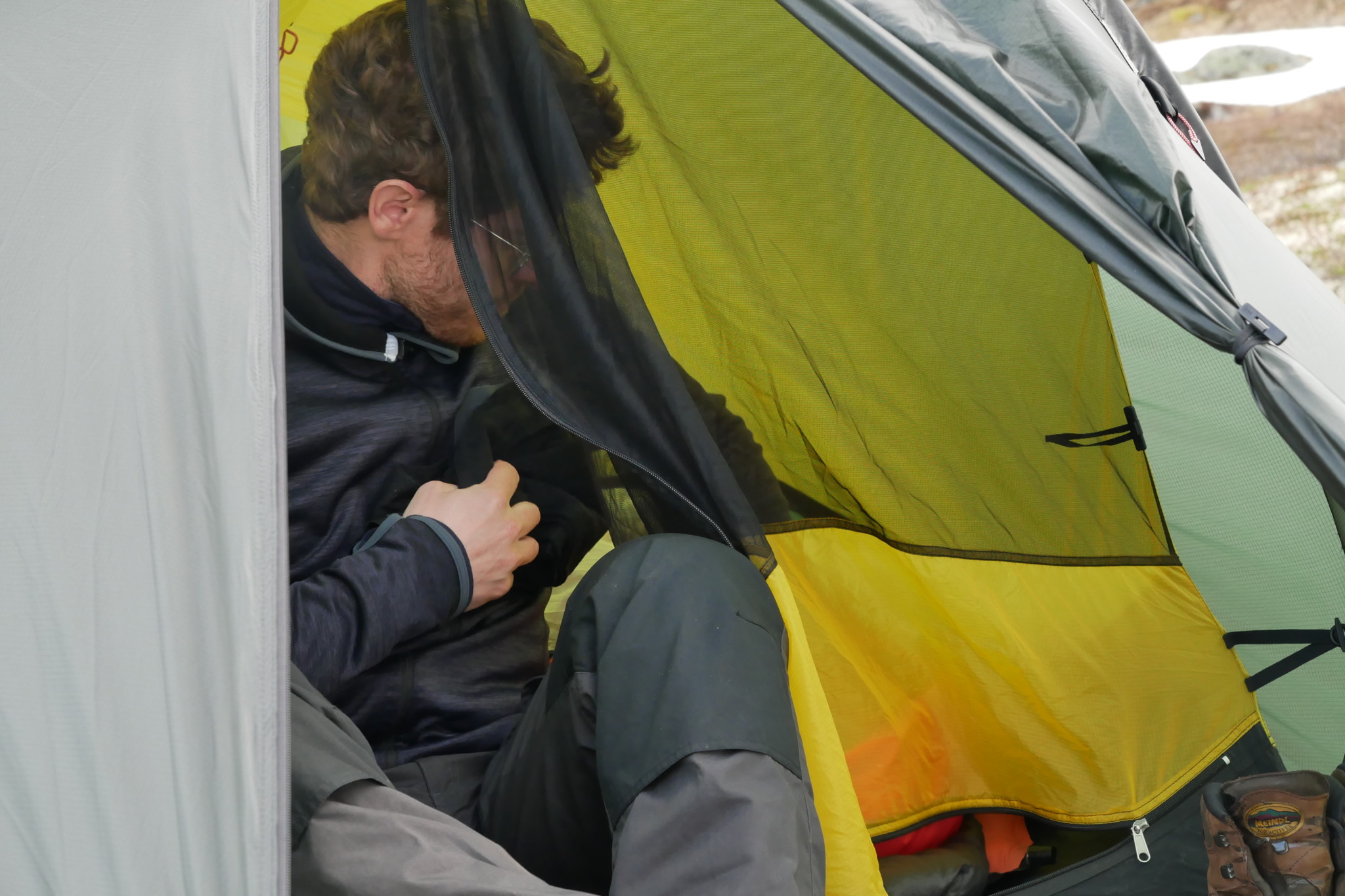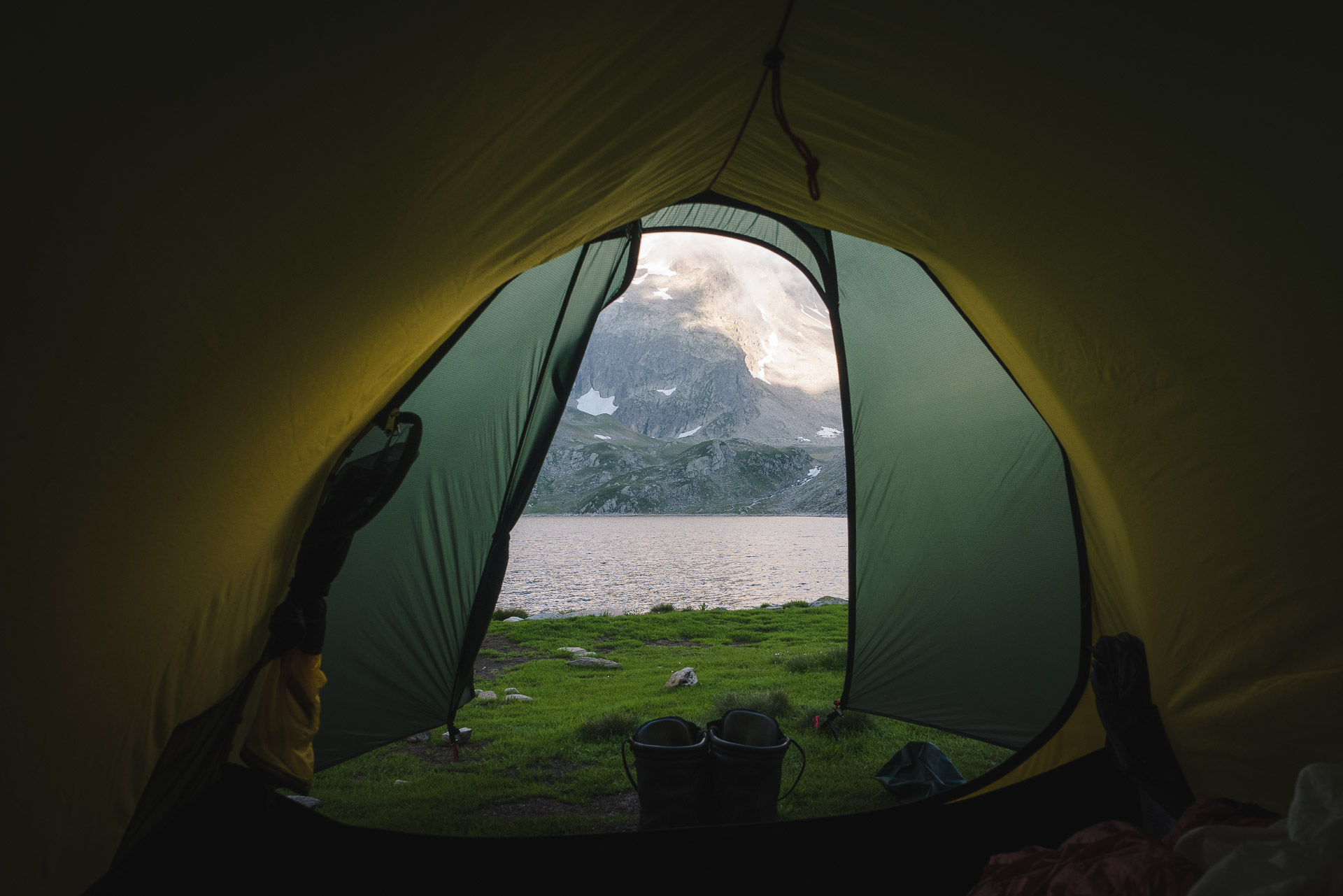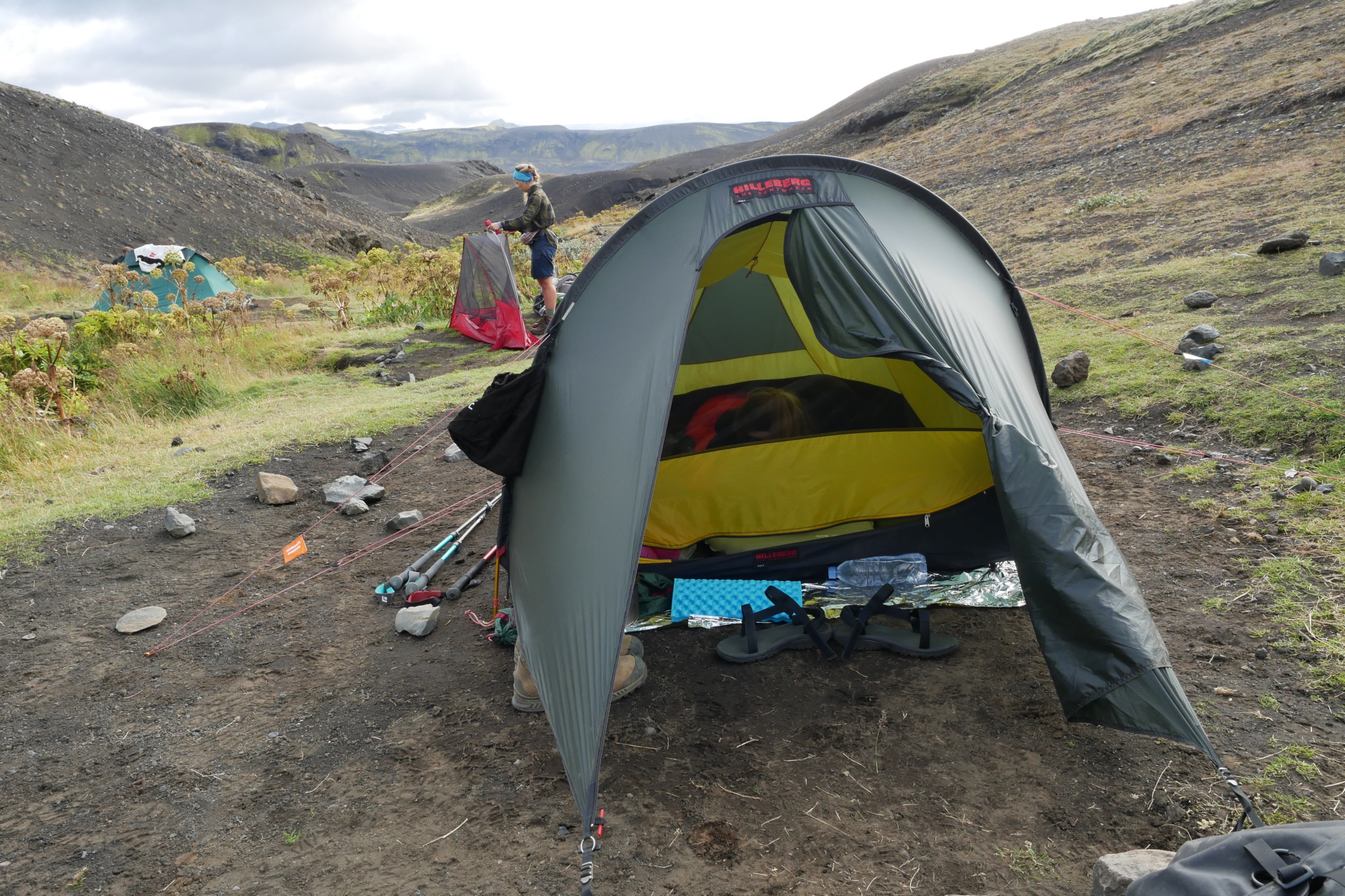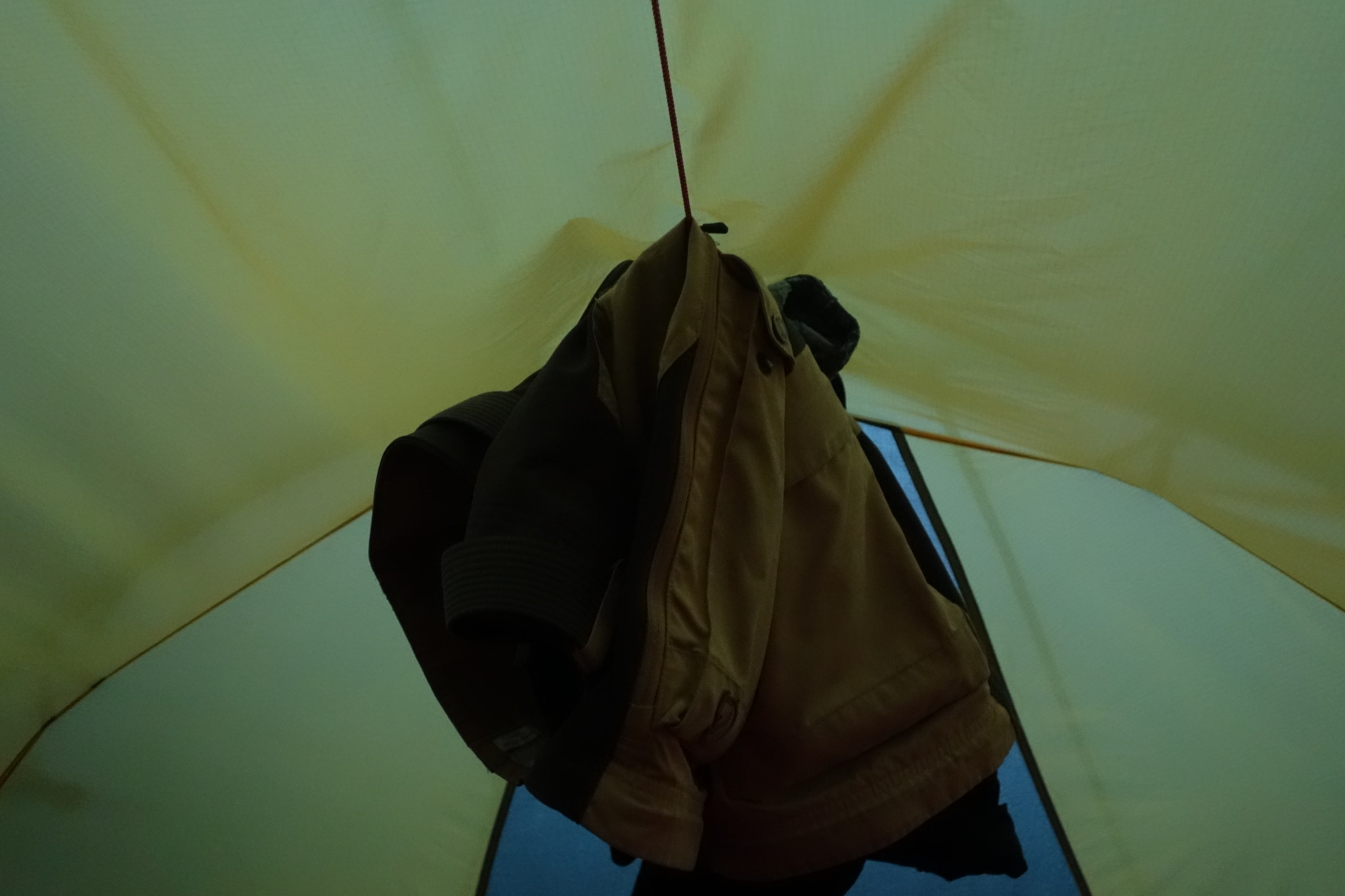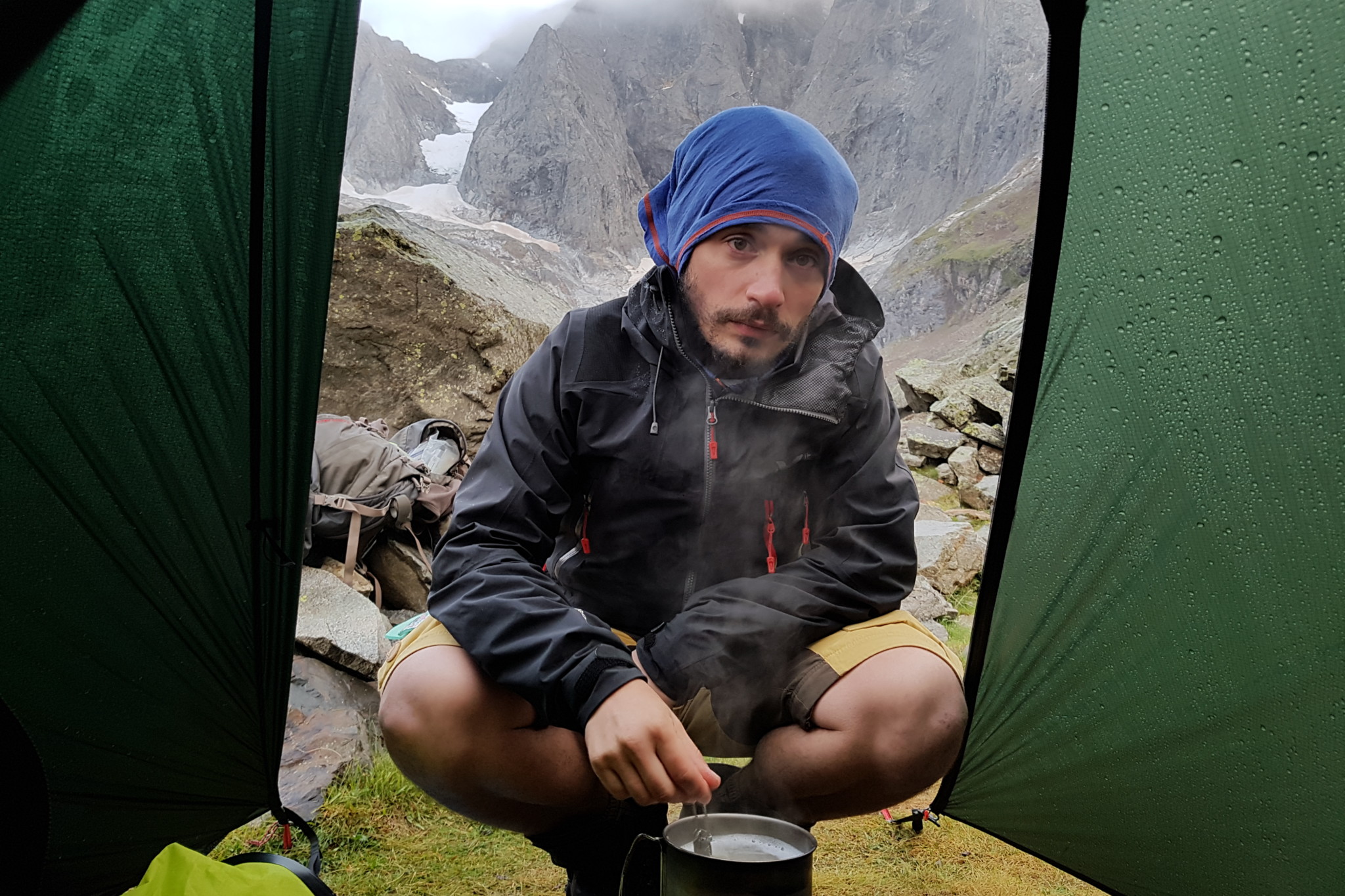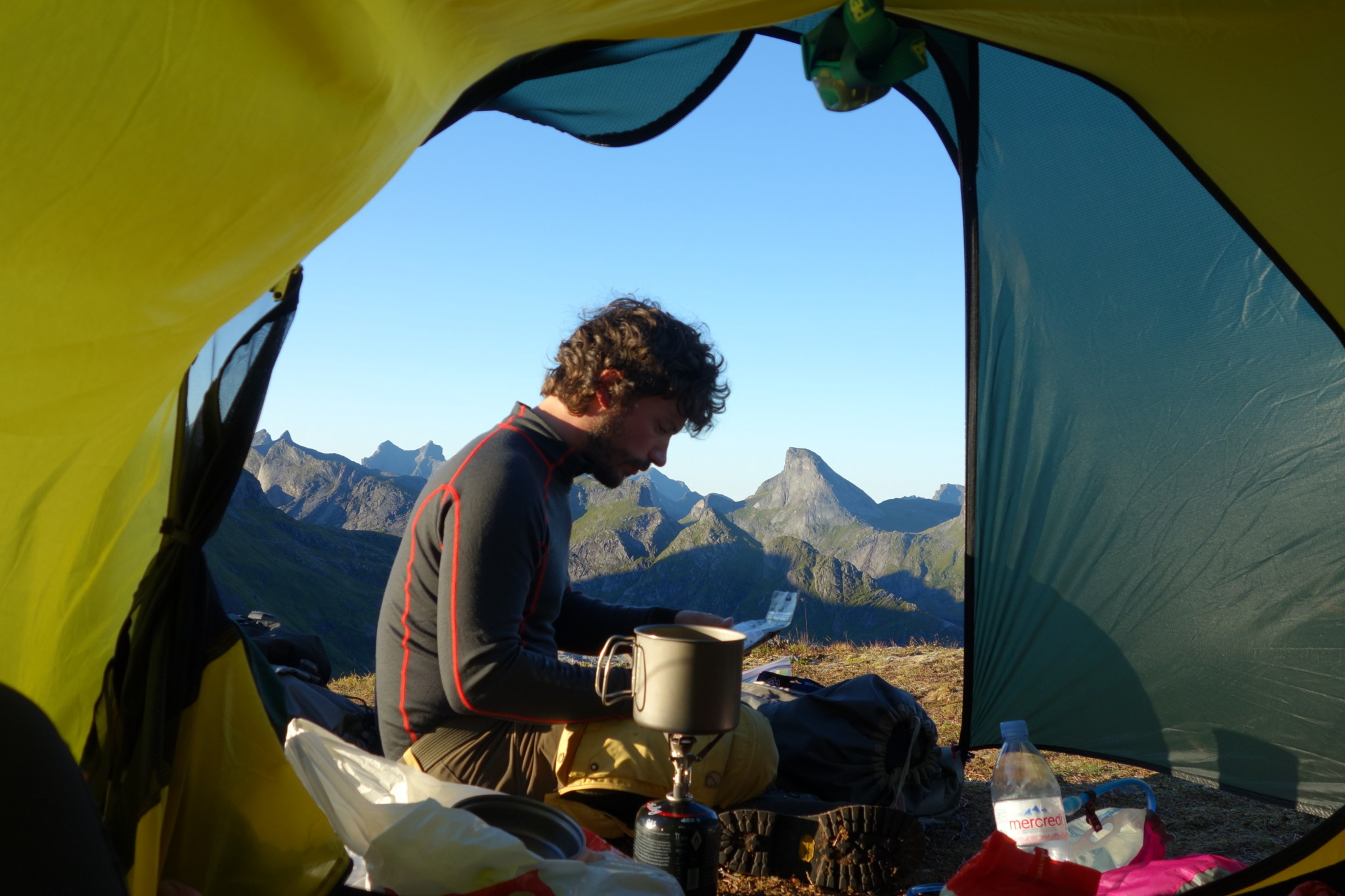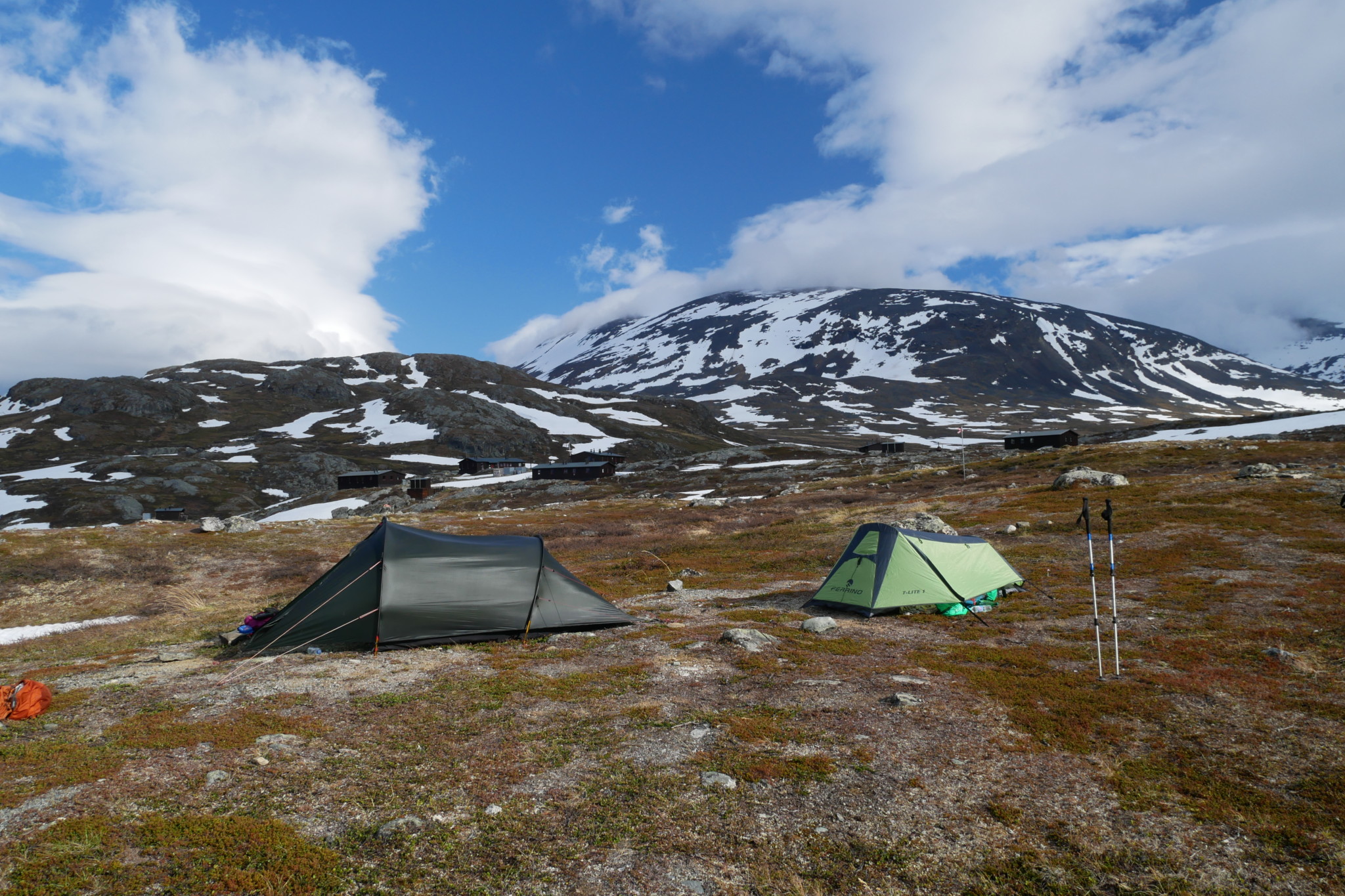Test & feedback of the HILLEBERG ANJAN 2 tent
The Anjan 2 tent from Hilleberg is a tunnel type tent intended for 3 season use. Hilleberg is renowned for the quality and solidity of its tents, which will be confirmed when using this model. But this comes at a price and not the least …
Test conditions
In total those are about 50 nights that we spent in the tent in the Scandinavian countries, in Iceland, in the mountains, … It will have seen all the weather: big sun, light rain, downpours, wind to decorate muskoxen …
List of main outings:
- Lofoten Islands
- Kungsleden
- Pyrenees
- Crossing the Vercors
- GR738 – Crossing of Belledonne
- Sarek
- Dovrefjell
- Iceland – Laugavegur
We were often two in the tent and with bags varying between 55 and 80L. We will come back to the habitability and comfort below.
General informations
- Nb of people: 2
- Seasonality: 3 seasons (but quality 4 seasons)
- Total length: 3.25m
- Interior length: 2.20m
- Apse length: 1.05m
- Total width (without shroud): ~ 1.40m
- Max living width: 1,30m
- Living width at feet: 1.10m
- Max living height: 1.00m
- Total floor area: 4m²
- Living area: 2.8m²
- Apse area: 1.2m²
- Weight: 1.80kg
- Tissue :
- Exterior: Kerlon 1000
- Interior: 10D ripstop nylon
- Floor mat: 50D ripstop nylon
- Impermeability:
- Roof: 5000mm
- Floor mat: 120000mm
- Fixing points: 12 (8 at the tent and 4 guy lines)
- Available colors: Green (tested model), red, sand
- Sale Price: € 825
Assembly and disassembly
Hilleberg tents are particularly well thought out at this level and it is a pleasure to put up and take down the tent.
For the assembly, it is enough to take out the tent, put two stakes at one end, thread the two poles and tension the whole before putting back two other stakes. In easy conditions, the operation will take 5 minutes, in difficult conditions, a little more time but this can be done quickly even on its own. Once these four stakes are installed the tent stands upright but we can add another 9 others, the tent is then completely concrete!
Big advantage of the Anjan 2: it mounts with the double canvas already in place. It is a big time saver and especially the inner canvas is protected from the rain.
Significant disadvantage but inherent in the “tunnel” type of the Anjan: it is not self-supporting. You will therefore need to be able to fix it to the ground.
For disassembly it is the exact reverse operation and it does not take more time. The bag provided to transport the Anjan has the good taste of being a size perfectly suited to easy storage, so there is no hassle in storing the tent.
The tent is also supplied with a repair pole section in the event of breakage, which can be very practical.
Once folded the tent occupies a cylinder of about 50cm in height for a (malleable) diameter of 20cm which allows it to fit in a backpack or store it outside of it that does not interfere .
- Take the tent out of its transport bag (in case of wind beware of the latter)
- Unroll the tent with the side opposite the door in the direction of the wind (if the latter is very strong and you are alone, do not hesitate to attach the tent to your bag for example)
- Plant the stakes in the two eyelets on the windward side.
- Insert the hoops: the large one is marked with a red mark on the hoop and the canvas
- Insert them into the provided eyelets
- Fix the stakes at the door by stretching the canvas in the axis of the first stakes attached (the front and rear stakes must be parallel).
- Stretch the canvas with the straps around the edge of the tent
- Fix the tensioners and stretch them: the longer they are "horizontal" the better it will hold in the wind. Do not tension them too much (they must not distort the tent)
- There you are!
- For disassembly, simply repeat the same operations backwards.
- I advise you to "fold" the tensioners well so that they do not get tangled during storage / transport
- Relax the canvas too
- For the final folding:
- Fold the door towards the "center" to form a rectangle
- Fold the rectangle in 3 lengthwise, it should be wide like the folded arches
- Place the poles (in their bag with stakes) at the windward end and roll the canvas around.
- Put everything in the transport bag
NOTE: pitch the tent on a surface that is more rounded (convex) than hollow (concave). If only for the flow of rain but also to be able to stretch it well.
Installation option
The assembly presented is the basic one, but Anjan offers many alternatives!
- You can only mount the outer fabric using a cord to stretch the ends of the poles.
- You can mount the inner canvas alone if time permits (pass the hoops in the loops that normally connect the two fabrics.
- The rear side can be raised to improve ventilation
- The apse can be partially or fully folded to improve access and sight
These options are very practical in hot weather.
Weather resistance
Hilleberg is a Swedish brand, so they make tents that withstand the Swedish weather. Ie solid tents !!
Faced with the rain there is nothing to complain about. I never leaked water from the tent or the apse. The cut of the canvas protects well even if there is wind. You just have to make sure that you don’t touch the outside fabric (the bags in the entrance or at the feet for example). Rain level no worries even in heavy rain that lasts a long time. The ground carpet also does its job very well as long as you don’t pitch the tent in a swamp and avoid heavy pressure on the carpet. You will therefore be dry with this tent.
As for the wind, it’s solid too. There are 12 fixing points in all. Suffice to say that Eole will have to deploy a little energy to uproot the tent. Unlike other tents I have had in the past, it does not fold downwind. Indeed, the shrouds are placed so as to support the hoops well and the whole is very stable. So no worries about the wind resistance, which we could test several times … Only worries, the orientation of the tent in the wind. The latter is tunnel type, this means that it will not support the wind in the same way depending on its orientation: if the wind blows in the direction of the main axis of the tent then no worries, however if the wind breath through the canvas then has a tendency to snap which can be disturbing. The outside fabric will also tend to widen on one side and swell on the other which can be annoying in the interior space. It is therefore “enough” to set up the tent with the correct orientation, hoping that the wind will not turn! This inconvenience has never been a big concern but it must be kept in mind.
I did note, however, a slight tendency to condense in the outer fabric. To compensate for this, I open the top of the front door a little to make a little “draft”: the wind rushing between the fabrics thus ventilating a little better.
Resistance over time
The Hilleberg Anjan 2 is a solid tent. First of all thanks to the textiles chosen: kerlon 1000 is a very resistant material (abrasion, tearing) and which can be repaired quite easily. Similarly for the floor mat or the interior canvas, we can trust these fabrics.
The hoops are solid, no worries at this level. The tent is sold with a repair section in case (the critical moment to break the pole is during assembly / disassembly: we quickly walked on the pole). Likewise all accessories (zippers, rings, straps, …) are solid.
After 50 nights spent in it and as many erection / dismantling on all types of terrain, the tent today shows no clear sign of fatigue or wear. Not even a small hole in the floor mat.
This tent is solid. Just use it following the manufacturer’s recommendations and common sense and it will last over time.
Roominess and comfort
Important point: is it a comfortable tent? Well overall yes with some reservations …
As mentioned above, the tent is easy to pitch, with different configurations to adapt to the weather, so it’s a good point on this side.
From an interior space point of view it’s good for two without being very luxury either … In terms of length it’s good for my seventy meter but a friend who is in 1.85 had a tendency to touch the backdrop which can cause moisture on the sleeping bag by capillarity. In width, it is not bad, enough to put two classic mattresses and still have 10cm of margin … We will find two pockets at the entrance door quite practical and good size. A short cord at the level of the interior canvas ceiling, very practical for hanging up your socks in the evening or hanging a small lamp. In terms of height, it is limited. We sit quite comfortably towards the front of the tent but impossible at the back, and again we must not be too tall. We will therefore rather lie inside, especially for two.
In the apse, I can easily store an 80L bag as well as a 60L bag with the shoes next to it. By cons in this configuration there is more room. It can be annoying to cook under the apse (those which is not recommended, however).
The front door is well done although it can sometimes be uncomfortable to close it if you are in your down. On the other hand the fact that there is only one door makes that one inevitably hinders the other a little to enter / leave …
Very positive point: the color of the interior fabric. This one is yellow and thus allows to always have a bright interior. Even if it’s gray outside. I must admit that I was really surprised by this point. It is very effective and pleasant to use.
Conclusions
We are here in the presence of a very good tent but which pays … More than 800 € for a tent it is very expensive (I bought mine 630 € in 2017 but the prices increased then). But the idea with Anjan is to keep it for a long time. This can therefore be profitable in the long term … to be confirmed.
If not this point, the tent is of excellent quality and offers real comfort in the face of the elements. We feel safe which is essential in trekking when our only shelter is this little piece of canvas … I am not at all disappointed with this purchase and I always have the same pleasure in spending nights at the bottom of the pampas in my little anjan 2.
We like :
- Resistance to the elements
- Finishing
- Robustness over time
We dislike :
- Living length
- The price
- The interior height
